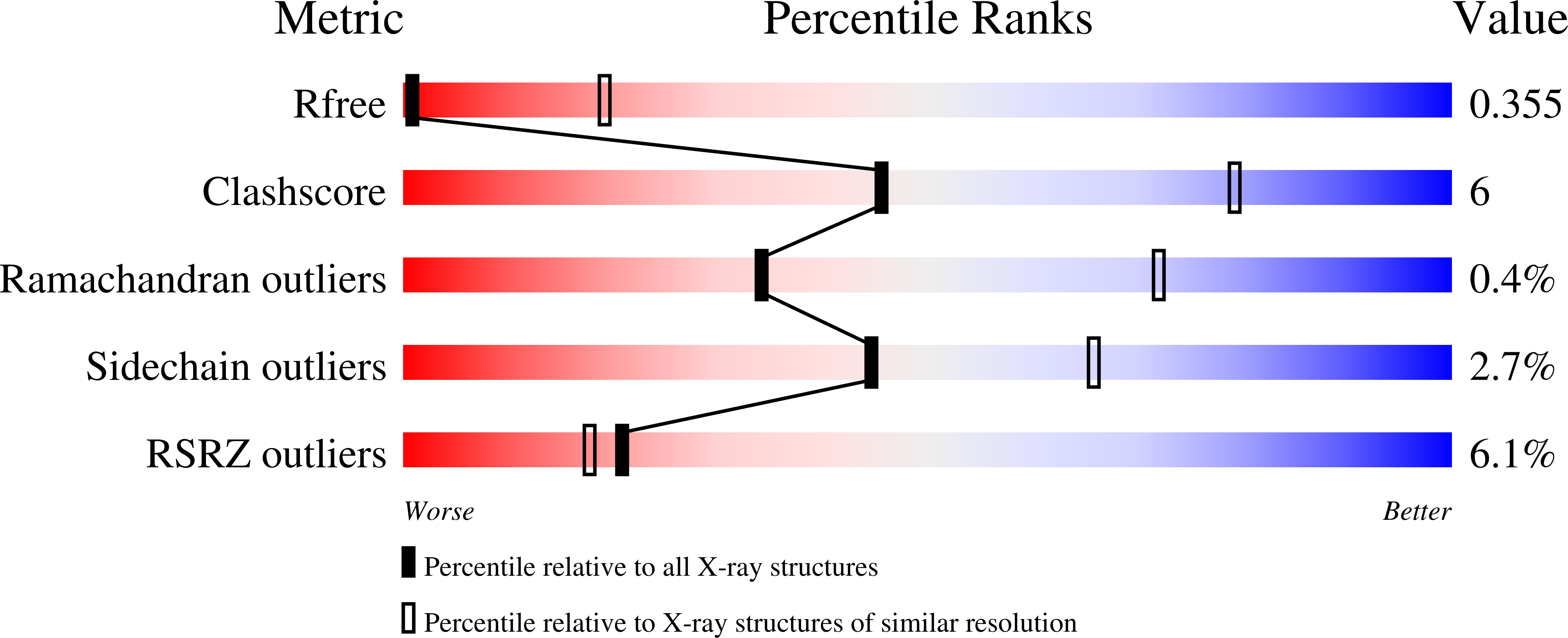
Deposition Date
2019-09-11
Release Date
2020-10-14
Last Version Date
2024-11-06
Entry Detail
PDB ID:
6UBF
Keywords:
Title:
Role of Beta-hairpin motifs in the DNA duplex opening by the Rad4/XPC nucleotide excision repair complex
Biological Source:
Source Organism:
Saccharomyces cerevisiae (Taxon ID: 4932)
Host Organism:
Method Details:
Experimental Method:
Resolution:
4.60 Å
R-Value Free:
0.35
R-Value Work:
0.31
R-Value Observed:
0.31
Space Group:
P 41 21 2


